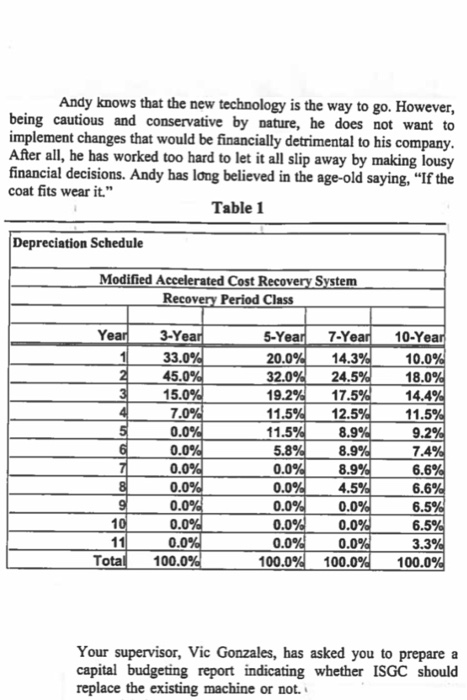the innovative sporting goods company (isgc) was founded in 1975 in Cambridge, MA
The Innovative Sporting Goods Company (ISGC) was founded in 1975 in Cambridge, MA. Its founder, Andy Pratt, a mechanical engineer, had developed a sound technique of making baseball bats. Under his leadership, the company had gained national reputation. Recently, however, a new machine had been developed in the industry, which would allow manufacturers to coat the aluminum baseball bats with a special compound giving them a satin finish and making them more durable and powerful. The prototype had been presented to the respective regulatory authorities and had been approved. Upon Andy's request, Douglas Adams, the head of the design group, had tested the new product and researched the relevant cost and production process issues that a machine replacement would entail. Doug reported that besides the initial price tag of $350,000 for one of these machines, users would have to incur shipping, handling, and installation costs of $4500 and annual fixed operating costs of about 20,000 per machine Currently, the company incurs fixed operating costs of $28,000 for its coating and finishing process. Initial marketing survey results indicated that the company would be able to increase of its newly designed baseball bats by about 15% in the first year of introduction and thereafter at a rate of 5% per year compared with forecasted sales growth of 2% per year for the current type of basebal bats. During the most recent sales year, ISGC sold 220,000 baseball bats at an average price of S12.50 per unit. The newly designed bat was expected to sell for $13 per unit. Material, labor, general, and administrative costs were expected to remain constant at $10 per unit. The increased sales and productio requirements would entail an increase in accounts receivable of $54,0 an increase in accounts payable of $30,000, and an increase in inventory of $20,000. It was assumed that any increase in net working capital would be recovered at the end of the useful life of the machine, which 00 was estimated to be 10 years. The existing machine was purchased 5 years ago for $225,000. Currently, it could be sold for S100,000, with the price expected to decline to about S10,000 after 10 more years of use. Depreciation on the existing machine was being calculated using a 15- year straight-line schedule with the assumption of no residual salvage value. The new machine was expected to last for ten years-the same as the remaining life of the old machine. The new machine would qualify as a 5-year class life asset under MACRS depreciation rates (see Table l) and was expected to have a market value of approximately $20,000 at the end of its economic life. ISGC's marginal tax rate was 34% and its weighted average cost of capital was estimated at 15%. Part of the cost of replacing the existing machine would be financed by a bank loan that would require an annual interest expense of 10% on the outstanding balance








